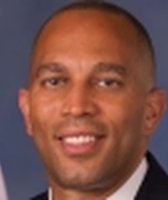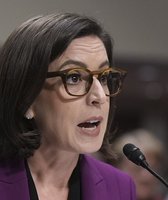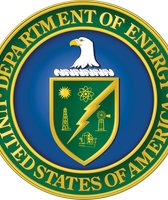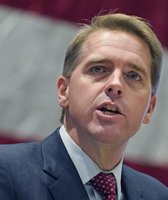Get PolitiFact in your inbox.

Changes to believe in: Obama promised more than 500 of them.
As the first year of President Barack Obama's presidency draws to a close, we at PolitiFact have been keeping close tabs on his campaign promises. About two-thirds of his 514 campaign promises tracked by the Obameter have been rated for progress. We expect those ratings to change as we follow promises through Obama's term, but we think the ratings provide a useful snapshot of a presidency in progress.
Our goal -- which we're being careful not to call a promise, lest we be criticized for falling short of it -- is to determine a rating for every Obama promise by Jan. 20, 2010, the first anniversary of his inauguration.
We'll see if we can meet that goal. But in the meantime, we thought readers might like to see a sampling of the roughly 50 promises we've rated in the past 10 days. We've chosen the following 10 because they offer a diverse mix of subject matters and ratings. Here, we've organized them by rating category. Our categories are Promise Kept, Compromise, In the Works, Stalled and Promise Broken.
A final word: We welcome reader input as we strive to rate the remaining 190-odd promises. If you notice an unrated promise that should have a rating (or if you have reason to believe we've rated a promise incorrectly) please e-mail us at
obameter@politifact.com
; tweet us
@politifact
; or leave a comment on our
Facebook page
. Please provide links to official documents or other relevant Web sites if possible.
PROMISES KEPT
Promise 154:
S
trengthen and expand military exchange programs with other countries
On July 6, 2009, the United States and Russia agreed to resume military bilateral cooperation, which had been on hold since tensions between the countries grew over the military conflict between Russia and Georgia in August 2008. The sides agreed to conduct nearly 20 exchanges and operational events before the end of 2009, hold an orientation for Russian military cadets at the U.S. Military Academy at West Point, N.Y., and plan for a joint exercise on responding to hijacked aircraft, among other things. Meanwhile, during Obama's visit to China in November, the president secured a commitment to resume military exchanges between the two countries after China suspended them the year before due to U.S. arms sales to Taiwan.
Promise 342:
Work toward deploying a global climate change research and monitoring system
When the president signed the economic stimulus package in February, he approved $170 million to address "critical gaps in climate modeling and establish climate data records for continuing research into the cause, effects and ways to mitigate climate change." In addition, a share of $400 million for NASA being spent in the stimulus bill under the heading "science" would go toward Earth observation satellites. It will take years to fully deploy some of the systems being funded by the bill, but the administration has indeed lived up to its promise to push these efforts forward.
Promise 200:
Appoint a White House Coordinator for Nuclear Security
We were a bit late in rating this one, but Gary Samore was installed as National Security Council coordinator for Arms Control and Non-Proliferation within a few days of Obama's Jan. 20, 2009, inauguration. Samore, a veteran nonproliferation hand, worked for the National Security Council under President Bill Clinton from 1996 to 2000 and later was a vice president at the Council on Foreign Relations, a nonpartisan think tank focusing on foreign policy. The post, recommended by the 9/11 Commission report, was never filled by President George W. Bush. Obama's decision to fill it was regarded in foreign policy circles as a move that gave the issue higher visibility within the administration.
IN THE WORKS
Promise 136:
Increase special operations forces and civil affairs
On April 6, 2009, Defense Secretary Robert Gates unveiled a defense budget recommendation in which he stated that "to grow our special operations capabilities, we will increase personnel by more than 2,800 or 5 percent and will buy more special forces-optimized lift, mobility, and refueling aircraft." The ensuing 2010 budget proposal from the White House incorporated his recommendation. In the meantime, the National Defense Authorization Act of 2010, signed by President Obama on Oct. 28, 2009, provided nearly $9 billion for special operations forces, an increase of $308 million to address its unfunded priority list, including improved surveillance capabilities, communication systems, and air and ground vehicle modifications.
Promise 153:
Include humanitarian international missions in long-term budgeting
The Obama administration promised transparency in budgeting, and it has made progress on that front with humanitarian assistance. The president's budget reduces the reliance on "supplemental" spending measures to fund humanitarian assistance and United Nations peacekeeping missions, reversing the common practice under his predecessor, George W. Bush. "While emergency supplementals may be required in the future, they should focus on truly unanticipated events and not be used to fund regular programs," the president wrote.
Promise 232:
Create a public "Contracts and Influence" database
Obama promised a database that would "disclose how much federal contractors spend on lobbying, and what contracts they are getting and how well they complete them." No such database exists yet, but the administration has spent considerable effort on increasing transparency on government contracts -- something that could be the basis for such a database in the future. On Dec. 8, 2009, the Office of Management and Budget directed federal agencies to "take prompt steps to expand access to information by making it available online in open formats," including timetables for providing data to the public, with the first coming just 45 days after the directive was issued. Already, the Web site recovery.gov tracks where stimulus money is being spent, and usaspending.gov tracks a broader array of federal expenditures.
STALLED
Promise 87:
Provide the CDC $50 million in new funding to determine the most effective approaches for cancer patient care
Obama promised to provide the Centers for Disease Control and Prevention with $50 million in new funding "to determine the most effective approaches that assist not only navigation of cancer patients through diagnosis and treatment processes, but also provide easy-to-understand information on the necessary follow-up steps to ensure continued lifelong health." But while the administration used the stimulus package passed earlier this year to send more money to the CDC, we haven't been able to find new funding to determine the most effective approaches for cancer patient care.
Promise 79:
Modernize public health buildings
Obama said during the campaign that government "must invest in ... modernizing our physical structures, particularly our public health laboratories." We couldn't find any additional money for either state-based laboratories or the Centers for Disease Control and Prevention's public laboratories in either administration budget proposals or stimulus funding. We also asked the Association for Public Health Laboratories and a spokeswoman said the group didn't know of any extra funds for buildings.
Promise 468:
Require plug-in fleet at the White House
Barack Obama promised that "within one year of becoming president, the entire White House fleet will be converted to plug-ins as security permits." Obama was specific that he would convert the fleet to "plug-ins," which are a subset of hybrids that can be plugged into ordinary household electricity and operate without using gasoline at all (though they do have a gasoline engine as a backup). This market is far less developed than it is for hybrids, with the earliest models going on the commercial market in 2010. Given the state of the technology and the market -- not to mention the special security requirements of carrying the president and foreign leaders -- guaranteeing an all plug-in fleet by Jan. 20, 2010, was almost a nonstarter from the moment he made the promise. The White House says it remains committed to the idea of a greener White House fleet, but it is essentially assured of missing its stated deadline of one year.
PROMISE BROKEN
No. 249:
Double funding for afterschool programs
Obama promised to double funding for the 21st Century Learning Centers program, so that it can serve 1 million more children. The program, run by the Education Department, funds before- and after-school programs as well as related services for their families. But the administration didn't come close to achieving its goal. When the White House released its fiscal year 2010 budget request for the Education Department, it requested exactly the same amount in 2010 for the program as it had spent in 2009 -- a bit over $1.1 billion. The House actually added $50 million for the program to what the president had requested, while the Senate stuck to the president's amount. When negotiators from both chambers hammered out a compromise, they upped the amount by about 3 percent above the fiscal year 2009 level -- not double, as Obama had promised.
Our Sources
See individual promises for sources.












































